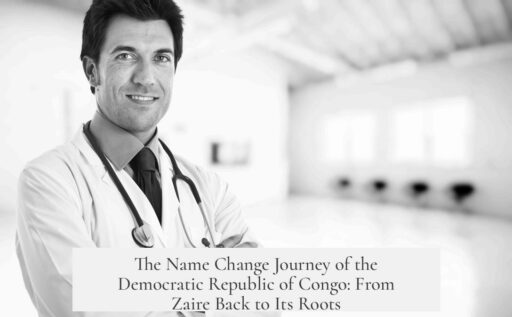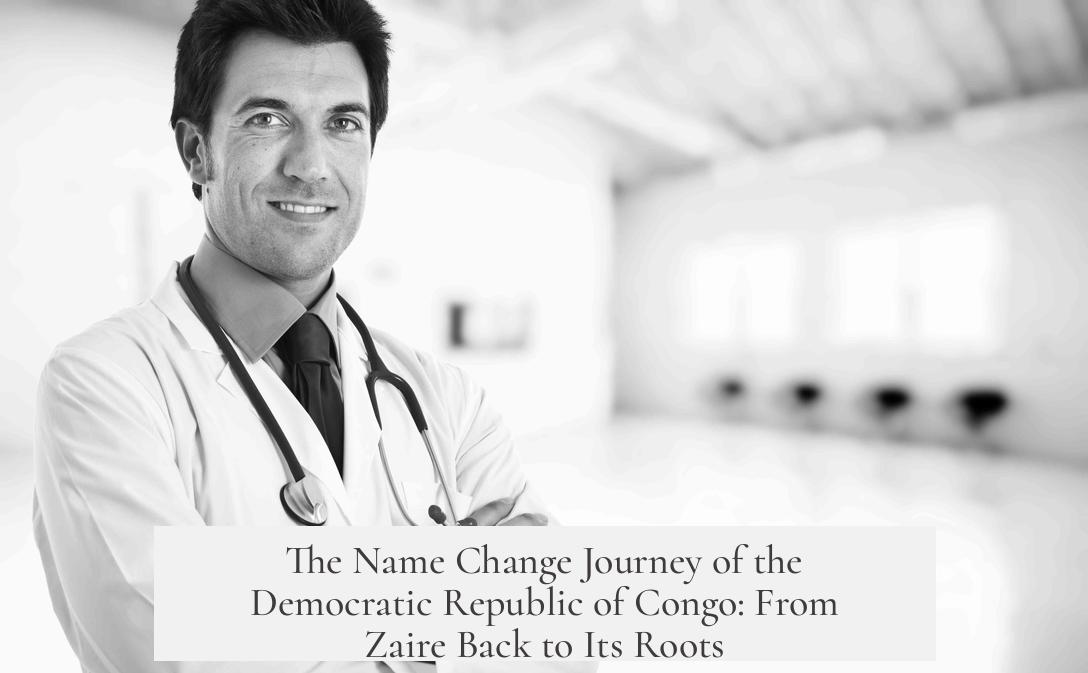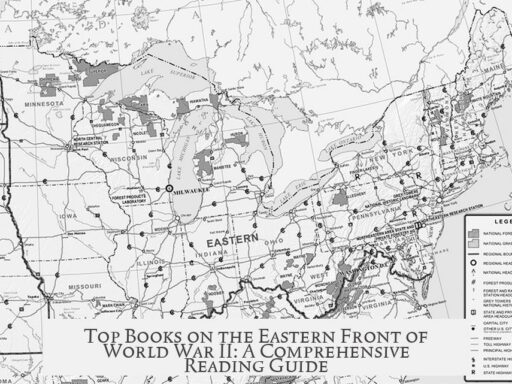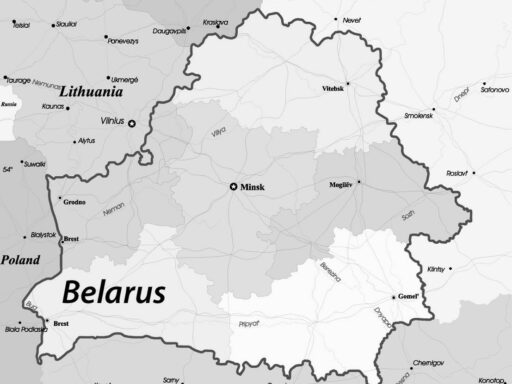The Democratic Republic of Congo changed its name to Zaire under Mobutu Sese Seko’s rule to enforce a policy called ‘authenticity,’ which aimed to erase colonial influences. They reverted the name back to the Democratic Republic of Congo in the 1990s as the authenticity policy lost support and the regime weakened.
When Mobutu seized power in 1965, he launched a program called “authenticity.” Its goal was to remove what he called “mental colonialism.” This involved replacing French names with indigenous ones, promoting local culture, and changing national symbols. Part of this program was renaming the country, its currency, and important landmarks.
The name “Zaire” came from a Portuguese mispronunciation of the local word “nZair,” which referred to the Congo River. Mobutu adopted “Zaire” for the country to mark a symbolic break from European colonial heritage. Renaming the river, currency, and country was meant to boost national pride and promote indigenous identity.
During the 1980s, Mobutu’s authenticity program began to lose credibility. Economic decline, corruption, and political unrest weakened his regime. This shift diminished the appeal and relevance of the name Zaire. As Mobutu’s rule eroded, opposition groups and the international community favored restoring the country’s original name.
In 1997, after Mobutu was ousted by rebel forces led by Laurent-Désiré Kabila, the country officially resumed the name Democratic Republic of Congo. This change symbolized a political and cultural reset, moving away from Mobutu’s era and its policies. The restoration aligned the country with its original identity and historical roots.
- Mobutu’s ‘authenticity’ program sought to remove colonial influences by renaming the country and promoting indigenous culture.
- “Zaire” originated from a Portuguese adaptation of the local word for the Congo River.
- The authenticity policy and the name Zaire lost support by the 1980s amid political and economic turmoil.
- The name reverted to Democratic Republic of Congo in 1997 when Mobutu was overthrown.
Why Did the Democratic Republic of Congo Change Their Name to Zaire, and Why Did They Change It Back?

The Democratic Republic of Congo changed its name to Zaire as part of Mobutu Sese Seko’s “authenticity” campaign to purge colonial influences, only to change it back in the 1980s when the policy lost its impact and credibility.
That’s the nutshell version, but stick around. There’s an intriguing story about identity, power, and politics underneath those name changes.
The Bold Start: Mobutu’s Program of Authenticity
When Mobutu seized power in 1965, he launched a sweeping cultural revolution, which he called the program of authenticity. His goal? To strip away the “mental colonialism” that lingered after Belgium’s retreat from Congo in 1960. Think of it as a national spring-cleaning—not just dusting the shelves but ripping out the colonial wallpaper and painting fresh indigenous hues.
This meant more than just renaming streets and towns. Mobutu wanted to purge French names, dress people in traditional garb instead of Western suits, and promote African languages. It was an ambitious—and heavily political—attempt to rebuild national identity around local culture, rather than foreign European influence.
The Name “Zaire”: More than Just a Label
Central to this campaign was renaming the country itself. Mobutu rebranded Congo to “Zaire.” You might wonder why exactly “Zaire”?
Here’s the quirky detail: “Zaire” wasn’t just a random word. It’s a Portuguese corruption of the Bakongo word “nZair,” referring to the Congo River. The river is the lifeblood of the region, so naming the country after it symbolized a direct link to indigenous roots instead of colonial powers.
- The Congo River → “nZair” (local name) → “Zaire” (Portuguese corruption)
- The country’s currency also changed to the “zaire,” doubling down on the break with colonial heritage.
Mobutu’s move sent a clear message: “We’re not Congo anymore. We’re Zaire, born anew, connected to our heritage.” It was a bold symbol of independence not just from foreign rule, but from mental and cultural control too.
Why Did the Name Change Back? The Fall of Authenticity

Fast forward to the 1980s, and the Zaire experiment starts to unravel. The authenticity campaign, once hailed as revolutionary, lost much of its shine. Mobutu’s regime faced criticism for corruption and authoritarianism. The cultural campaign became hollow.
The name “Zaire” started to feel less like a proud symbol and more like a remnant of a fading ideology. Public opinion shifted, and political realities forced a rethink.
By the early 1990s, the country dropped the “Zaire” label and returned to being the Democratic Republic of Congo. This wasn’t just a cosmetic change—it symbolized a rejection of Mobutu’s legacy and an attempt to reconnect with the broader historical and geographic identity tied to the earlier Congo name.
What Does This Name Saga Teach Us?
Names matter. They shape identity, memory, and politics. The shift from Congo to Zaire and back reflects more than administrative tweaks:
- Power and Identity: Mobutu wielded the authenticity program like a cultural sledgehammer, trying to weld national pride to indigenous roots. The name Zaire was a political tool—a way to rewrite history visibly.
- Limitations of Top-Down Cultural Policies: The failure to sustain the authenticity campaign reveals how difficult it is to engineer identity and culture from above without broad popular support and transparency.
- Legacy and Reconciliation: Returning to the Democratic Republic of Congo name was a practical gesture toward unity and acknowledging complex national histories.
It’s like an elaborate dance between colonial history, indigenous pride, and political survival. The name changes mapped not just geography but the mood of the nation at different times.
Examples of Name Changes with Political Weight
If Zaire’s story feels familiar, it’s because other nations have played the naming game too.
- Rhodesia → Zimbabwe: Shedding a colonial name for indigenous heritage, post-independence.
- Burma → Myanmar: Reflecting political shifts and a push for local nomenclature.
- Persia → Iran: To emphasize Aryan heritage over Western depictions.
All these examples show that changing a country’s name is deeply symbolic. It often signals a desire to reclaim identity or turn a new political page.
Can a Name Change Really Change a Nation?

It’s tempting to think so, but a name alone isn’t magic. Mobutu’s authenticity program reminded everyone that identity is complicated. Renaming the country and currency didn’t fix economic turmoil or end political corruption.
Yet the gesture mattered. It tried (and ultimately struggled) to unite people around shared roots. The reversal showed the limits of enforced identity changes without addressing deeper issues.
In Conclusion: The Power and Pitfalls of “Zaire”
The Democratic Republic of Congo’s flirtation with the name “Zaire” reveals a raw truth: names aren’t just words—they reflect history, politics, and dreams.
Mobutu’s program aimed to erase colonial shadows but stumbled under its own weight. Return to the original name acknowledged those complexities and the nation’s ongoing search for identity.
So next time you wonder why countries change names, remember: it’s rarely just about the name. It’s about what that name promises, represents, and sometimes disappoints.



